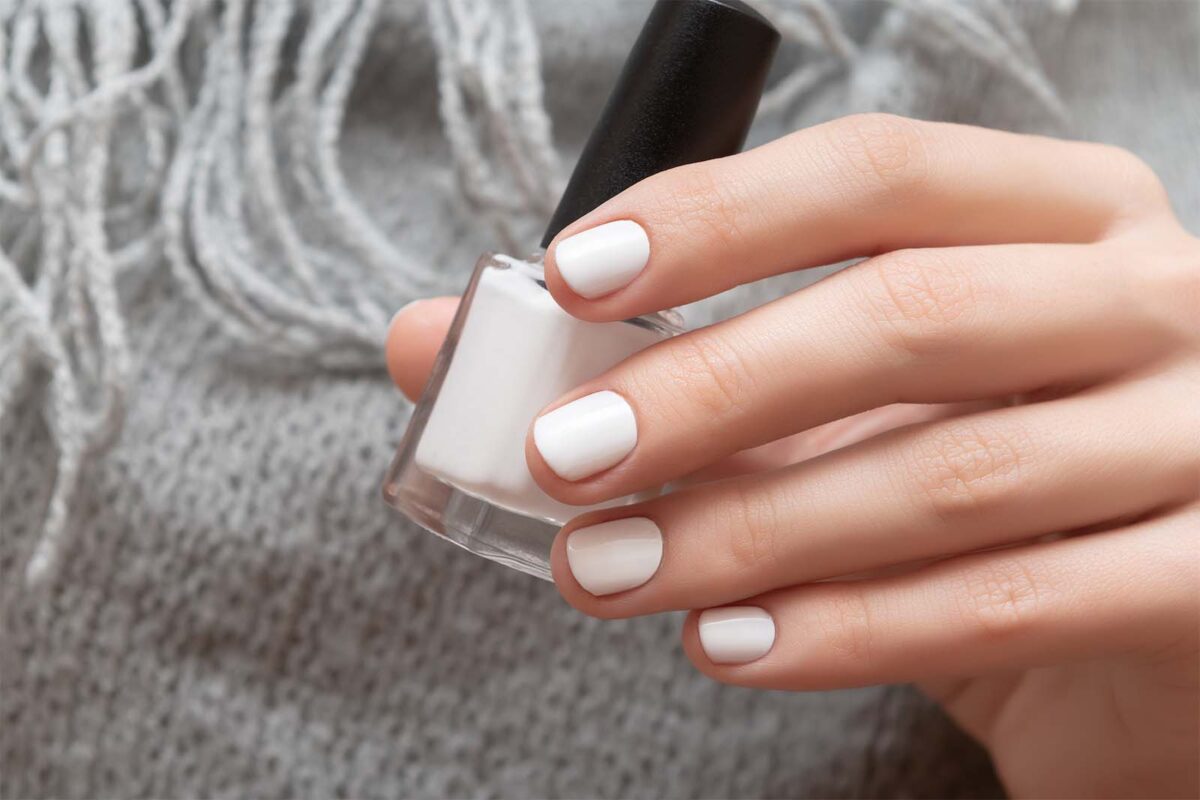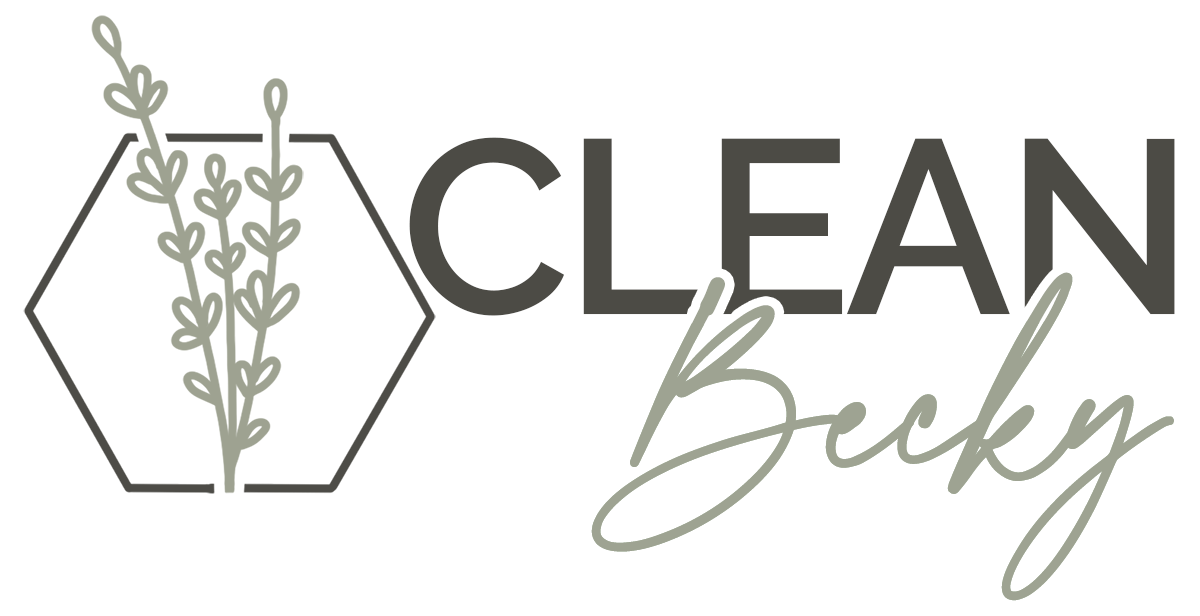
Detox Your Nail Polish & Top 5 Chemicals to Avoid
This post contains affiliate links
Conventional nail polish can be one of the most toxic beauty products around, as most contain a host of harmful to your health chemicals. These chemicals are especially dangerous to children & pregnant and breastfeeding women due to how quickly they disrupt the endocrine system and brain development. From the nail polish vapors as they’re drying, to the absorption of the polish chemicals into nails and developing hormonal systems these are just a few of the harmful effects that these chemicals can create.

While there is no way to find a complete void of chemicals, while still being effective at staying in place and lasting, nail polish there are healthier alternatives out there.
As a young girl, I loved polished nails. My grandma often had beautifully polished nails as well as aunties and friends, but my mom, who was way ahead of her time on chemical exposures and avoiding harmful products, never allowed her young daughters to use polish. As we got older she knew she couldn’t hold off our teenage selves from wanting to paint our nails, especially when my sisters and I could buy polish with our own money. She would allow it in our home with one rule: We had to paint our nails outdoors in the fresh air – if I even tried to sneak a quick touchup indoors, she would smell the opening of the bottle from two floors away and I’d get the classic, “REBECCA, are you painting your nails?!”
Back then there weren’t any healthier nail polish alternatives, so it was either embrace all the harmful chemicals or don’t polish your nails. Thankfully there are now lots of great alternatives that work that have been formulated without the worst offenders.
There is no perfect polish on the market and if you’re using a product that will stay on your nails and retain its pigmentation through the onslaught that hands and feet endure regularly, then just know you will be tolerating levels of chemicals that aren’t awesome for your body. Using polishes without the below chemicals will make them significantly healthier for your body and your environment!
Progress over perfection always!
Ingredient exploration
The traditional chemical cocktail that creates the flow for easy application, the hardeners so it dries quickly, the color pigments, and the last so it doesn’t just immediately chip off are all needed to create an effective polish. While a lot of awareness has been brought to the negative health effects on not only the wearer but also the technician exposed to these chemicals in massive doses all day every day that they apply them to the wearer, better ingredients and processes have been developed to make polishes less health-harming, there is still a lot of awareness that is needed for the average consumer to make informed decisions about the health of their beauty routine.
- Camphor – sourced from the camphor tree, this chemical has been linked to severe allergic reactions that lead to dizziness, headaches & nausea and has been linked to liver disorders. Purpose: Shine & luster in polish finish.
- Dibutyl phthalate (DBP) -This chemical is banned in Europe and is known to cause reproductive problems, especially in boys. The Environmental working group classifies this chemical as the highest danger level and warns that it can cause organ problems and endocrine disruption. Most importantly it can deeply affect liver & kidney function. Purpose: improve the shine & durability of the polish
- Formaldehyde & Formaldehyde Resin – This known carcinogen is found in many nail polishes. It is also used to preserve dead things and when used in lab preparations, there are strict warnings to avoid inhalation or skin contact. Linked to allergic reactions, asthma & fertility issues. Purpose: depth, shine & hardness for polish. Preservative & bacteria growth inhibitor.
- Toulene– A chemical known to cause reproductive harm and dizziness. It is also found in gasoline and the CDC warns that it can cause central nervous system problems. The vapors have been linked to developmental damage to the fetus in utero. Purpose: thinning agent.
- Triphenylphosphate (TPHP) – a flame retardant that is not only a known endocrine (hormonal system) disruptor but is also linked to short-term acute symptoms such as nasal, eye & throat irritation. Purpose: improves flexibility & durability of polish.
There are other chemicals, but these are the more common, most harmful ones that felt were important to highlight, so you too can begin looking more deeply into your favorite products.
What about removers?
Nail polish removers are equally problematic and the fumes are especially harmful. So use them wisely and make sure you keep them out of reach of children. There are safer polish removers on the market, but I’ve personally found them to be expensive and very annoying to use. It takes forever to remove polish from one nail and I have to use a lot of the remover each time. My preferred nail polish remover, when needed, is pure acetone, used sparingly with proper ventilation and washing hands well after removal is complete. The reason I prefer this method is that it is the quickest way to remove stubborn polishes and doesn’t contain all the additives that non-acetone polishes contain. I don’t like using the acetone soaking method and if I ever get a sturdier polish, such as a less toxic soft gel, applied at the salon, I go to them for a chemical-free removal with their polishing tool and vacuum system so no one is breathing in those fine polish powders as they’re removed. After polish removal, don’t forget to nourish your nails with some almond oil massaged into nail beds & cuticles. If you can wait to repaint your nails for a few days, applying almond oil each day, it will dramatically improve the health of your nails overall.
The Good News
As I shared above, time, innovation, and consumer demand have created a really beautiful space in the marketplace for healthier nail polish companies to thrive! So if you, like me, really love having your nails polished on occasion or maybe even all the time, there are safer options available!
If you have a local salon you love going to, consider asking them to carry a healthier option. If that’s not something they’re willing to do, then bring in your polish. I love to bring in my polish as well as my favorite sugar scrub & body butter from Beautycounter for them to use – as those products also have ingredients that I prefer not to use on my skin! Some other things to take note of, if you go to a salon are: How well-ventilated is the salon? Do they also apply acrylics, which put a lot of dust and chemical vapors into the air? Are they striving to be cleaner and healthier in their practices & methodologies? I always consider not only my health when frequenting these places but also consider the health of the workers who spend day in and day out working in those environments. I like to support businesses that are choosing the healthiest environments possible for their clientele and their staff.
A few safer nail polish brands that I LOVE!
- For Kids: Piggy Paint *free of all, water based & Ella + Mila *17Free
- For GrownUps: Best Performance & Last: The Dazzle Dry System *5Free (all steps create nails that last for 10+days, on my toes I can go months without chipping). Best Color Selection & Price Point: Zoya *10Free
* the #free notated above indicates how many of the most harmful chemicals they do not use in their formulations. As I shared above, any product that is a lacquer that stays in place in both color & chipping is going to contain some chemicals. The only truly good for your health nail polish is unpolished nails or using something water soluble & peelable like Piggy Paints.
Need more personalized support and guidance?














